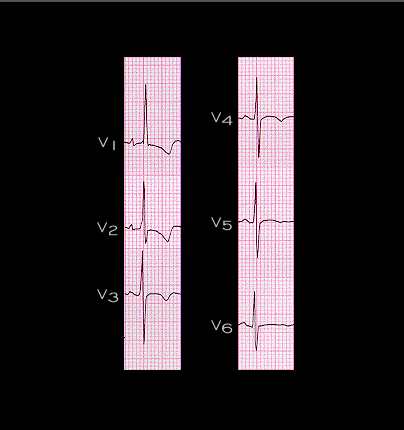
Focus now on the chest leads (V1-6). Notice that there is a tall R wave in V1 with virtually no S wave and that there is a significant S wave in leads V5 and V6. These features indicate that there is a marked increase in the forces directed anteriorly and to the right and that these forces dominate the normal posteriorly directed left ventricular forces. The ST segment in the V leads is normal but the T wave is now inverted in leads V2-5 as well as in V1, indicating a change in the sequence of repolarization. Thus, while the QRS spatial vector has shifted to the right and anteriorly, the T wave spatial vector has shifted to the left and posteriorly. These changes are the opposite of those which occur with left ventricular hypertrophy in which the normal posterior and leftwardly directed QRS forces are exaggerated and the T wave vector is shifted more to the right and more anteriorly.
